Search results for ayurveda (1451)
PM Modi’s speech at 6th World Ayurveda Congress & Arogya Expo, New Delhi
The Prime Minister,Shri Narendra Modi said the biggest challenge to Ayurveda comes from people who have dedicated their life to it. They too do not trust it fully, he said. Seeking to dispel the notion of Ayurveda and Allopathy being competing streams of medical science, the Prime Minister described Ayurveda as a way of life. He said a disease can be cured by Allopathy; and if a person adopts Ayurveda, he can ensure that he remains healthy and free of disease.
facebook.com/worldayurvedaCongress
facebook.com/worldayurvedaCongress
en.wikipedia.org/wiki/Dhanvantari
http://donttradeourlivesaway.wordpress.com/
donttradeourlivesaway.wordpress.com
anh-europe.org/campaigns/protect-traditional-medicinal-cultures
AYURVEDA mit Shri Sarvabhavana Mai 2010
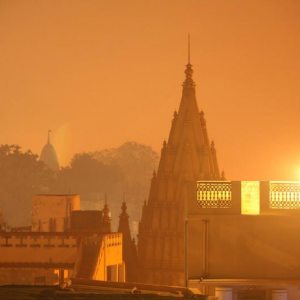
http://vimeo.com/prabhu/videos
International Center for Ayurvedic Studies
„India is not a country of the Hindus only. It is a country of the Muslims, the Christians and the Parsees too. The country can gain strength and develop itself only when the people of the different communities in India live in mutual goodwill and harmony. It is my earnest hope and prayer that this centre of life and light which is coming into existence, will produce students who will not only be intellectually equal to the best of their fellow students in other parts of the world, but will also live a noble life, love their country and be loyal to the Supreme ruler“ ~ Mahamana Pandit Madan Mohan Malviya ( Banares University BHU)
Ä�yurveda (DevanÄ�garÄ�: आयुर्वेद, the „science of life“, usually rendered simply ayurveda in English) or ayurvedic medicine is a system of traditional medicine native to the Indian subcontinent and practiced in other parts of the world as a form of alternative medicine.In Sanskrit, the word ayurveda consists of the words Ä�yus, meaning „life“, and veda, meaning „related to knowledge“ or „science“. Evolving throughout its history, ayurveda remains an influential system of medicine in South Asia.The earliest literature of ayurveda appeared during the Vedic period in India.The Sushruta Samhita and the Charaka Samhita were influential works on traditional medicine during this era.Ayurvedic practitioners, called „Ayurvedacharyas“, have also identified a number of medicinal preparations and surgical procedures for curing various ailments and diseases. Read More: > HERE <
Hallo liebe Freunde! – Auch im 2010er Jahr, wird uns Sri Sarvabhavana wieder einige Male besuchen. Das erste Mal im Mai. Er wird sich in der Zeit vom 6. bis zum 11. Mai in Wien aufhalten.
Sein diesmaliger Besuch steht ganz im Zeichen der Ernährung. Heutzutage, werden sich viele Menschen, über den Einfluss der Ernährung auf unser körperliches Empfinden, immer mehr bewusst. Die Nachfrage der Leute nach alternativen Ernährungsweisen steigt. Jedoch, wissen viele noch nicht, dass das was wir zu uns nehmen, auch unsere Emotionen wie unser Denken beeinflusst.
Du bist was du isst, heißt es so schön im Volksmund. Keiner möchte sich mehr mit künstlichen Zutaten und raffinierten Lebensmitteln vollstopfen. Zurück zur Vollwertigkeit ist das Motto.
Die LEBENSmittel sollen Kraft haben, sprich LEBENSenergie. Diese stärkt Geist wie Körper und hilft uns in einer von Informationen überfluteten und zu schnell lebiger Zeit zu bestehen. Zusätzlich zu der Auswahl von vollwertigen und naturbelassenen Nahrungsmitteln, trägt die richtige Zubereitung des Essens zu einer optimalen Aufnahme der Lebensmittel in unseren Organismus bei. Im Ayurveda heißt es, wichtig ist nicht was du isst, sondern was du verdaust. Die richtige Menge und Mischung von Gewürzen, erleichtert dem Körper die Assimilation des Verdauungsbreis. Als ich das erste Mal so ein toll gewürztes und zubereteites Gericht aß, war ich erstaunt, nicht nur vom wunderbaren Geschmack, sonder auch wie gut ich mich danach fühlte und wie schnell ich alles verdauen konnte. Es war sensationell.
Aus diesen Gründen wird Sri Sarvabhavanas Vortrag von der richtigen Ernährung handeln. In seinen persönlichen Beratungen, könnt ihr wie immer auch nach einer auf euren Körpertypen zugeschnittene Ernährung fragen.
AYURVEDA KOCHKURS BEI ASTRID: Viele von euch, kennen ja Astrid schon. Großzügig wie sie ist, hat sie uns immer ihre Räumlichkeiten für die Beratungen zur Verfügung gestellt. Dieses Mal aber tut sie nicht nur das, sondern wird auch selbst aktiv und bietet euch die Möglichkeit, in die kulinarische Welt des Ayurvedas einzutauchen. Sie veranstaltet gemeinsam mit Sri Sarvabhavana einen „coolinourishen“ Kochkurs und wird euch die Geheimnisse der Gewürze und der fantastisch, farbigen und vielseitigen Zubereitung der Speisen näherbringen. Zusätzlich wird es auch eine Palmblattbibliotheks-Reise-Info Veranstaltung geben.
Das wars von mir. Ich wünsche viel Glück und Erfolg und wie immer gibt’s unten alle Einzelheiten zu den Vorträgen und der Beratung.
Mit sonnigen Grüßen und Namaste,
euer, Herbert
- TERMINE: Vortrag von Sri Sarvabhavana Thema: Wie kann ich mich spirituell und körperlich optimal ernähren, um in Zufriedenheit, eine gesunde Lebensbalance zu genießen. Datum: Montag, 10.05.2010, 19:00 – 21:00 Uhr,
- Info Veranstaltung Palmblattbibliotheks-Reise: Im Anschluss an den Vortrag. Sprich: Montag, 10.05.2010 21:00 – 22:00 Uhr, Ort: Raum 3 , Liechtensteinstrasse 39 – 41, 1090 Wien
- Kontakt: HERBERT, 0699/17073418 und unter spiritualgrowth@gmx.at
- BASIC ARTICLES ON AYURVEDA <
- Meet Vedic Guide Shri Sarvabhavana, studies, friends, fans at fb <
- Meet Ayurveda4UAll, studies, friends at fb <
- Meet Pentavox Herbals & Ayurveda (Biggest Ayurveda Group on fb)<
- Meet Lord Dhanvatri, friends, fans at fb <
- C O O L I N O U R I S H: „Love what you do and do what you love“ :
Ayurveda – H.H. Swami Sivananda Maharaj
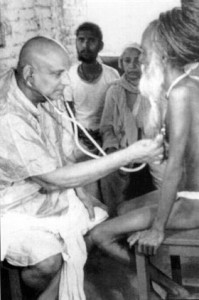
( H.H. Swami Sivananda Saraswati Maharaj )
> SIVANANDA – PRACTICE OF AYURVEDA <
Swami Sivananda Saraswati (September 8, 1887—July 14, 1963) was a Hindu spiritual teacher and a well known proponent of Sivananda Yoga and Vedanta. Sivananda was born Kuppuswami in Pattamadai, in the Tirunelveli district of Tamil Nadu. He studied medicine and served in Malaya as a physician for several years before taking up monasticism. He lived most of the later part of his life near Muni Ki Reti, Rishikesh. He is the founder of The Divine Life Society (1936), Yoga-Vedanta Forest Academy (1948) and author of over 200 books on yoga, vedanta and a variety of other subjects. He established Sivananda Ashram, the location of the headquarters of The Divine Life Society (DLS), on the bank of the Ganges at Shivanandanagar, at a distance of 3 kilometres from Rishikesh.
Sivananda Yoga, the yoga form propagated by him, are now spread in many parts of the world through Sivananda Yoga Vedanta Centres, but these centres are not affiliated with Swami Sivananda’s original ashrams which are run by the Divine Life Society. Read more: > HERE <
Sri Swami Sivanandaji Maharaj was a healer of the body in his Purvashram (before he entered the Holy Order of Sannyasa). He was a born healer, with an extraordinary inborn love to serve humanity; that is why he chose the medical profession as a career. That is why he edited and published a health Journal „Ambrosia“. That is why he went over to Malaya to serve the poor in the plantations there. And, strangely enough, that is why, he renounced the world and embraced the Holy Order of Sannyasa.
He was a healer of the body and the soul. This truth is reflected in the Ashram which he has established in Rishikesh. The huge hospital equipped with modern instruments was set up and the entire Ashram where all are welcome to get themselves healed of their heart’s sores and thoroughly refresh themselves in the divine atmosphere of the holy place.
SERVE, LOVE, GIVE, PURIFY
MEDITATE, REALISE
So Says Sri Swami Sivananda
Saraswati Maharaj
Sri Swamiji wanted that all systems of healing should flourish. He had equal love and admiration for all systems of healing. He wanted that the best of all the systems should be brought out and utilised in the service of Man. He has written a number of books on all aspects of Healing—from the Naturopathic and Allopathic points of view. This one dealing with Ayurveda is a valuable addition to the healer’s armamentarium.
Ayurveda is the Veda or knowledge of Ayus or life. It has been classified as the Fifth Veda.
Ayurveda is a distinct Veda. It is even superior to the other Vedas because it gives life which is the basis of all enjoyments, study, meditation and Yoga Sadhana.
Ayurveda is the science of life. It shows the way to remove diseases, to keep up sound health and attain longevity.
Ayurveda was in vogue in India since very early times. The Ayurvedic and Siddha systems have played a very important and vital part in the sphere of public health. Their popularity is due to their availability, cheapness and efficacy.
Here is a beautiful ideal of Charaka: „Not for self, not for the fulfilment of any earthly desire of gain, but solely for the good of suffering humanity should you treat your patients and so excel all. Those who sell the treatment of disease as merchandise gather the dust and neglect the gold.“
Charaka also says: „A physician who cannot enter into the innermost soul of the patient with the bright light of the lamp of his own knowledge cannot successfully treat any disease.“
India has ever been evolving art after art, science after science, as her contribution to the common heritage of all the nations of the world. Her greatest gift to the world is the gift of the spiritual science of Self-perfection. Next to it we should place this Science of Life, the Ayurveda, as a precious gift to be carefully developed and broadcast to all nations. It is a national duty of every Indian.
Nurse the Sick, Feed the Hungry, Clothe the naked, This is DIVINE LIFE.. …..Swami Sivananda
THE DIVINE LIFE SOCIETY
GVT. NATIONAL INSTITUTE OF AYURVEDA

* Traditional Ayurveda: Our Strenght *
> NATIONAL INSTITUTE OF AYURVEDA <

THE CAMPUS: The main campus of Govt. Ayurveda College is at Puthiyakavu, two kilometers from Tripunithura town in the Vaikom Road. The place is named after the Durga temple (puthiya-new; kavu-temple) famous for the fire works display during the annual festival.
It was a border area in between Cochin and Travancore the erstwhile princely States before the independence of India. The old building of the toll collection centre is still seen in the roadside. On Pathamudayam (the tenth day after Vishu, April 14 or 15) free trade is allowed in the forenoon, which is still re-enacted.
Lack of infrastructure for the introduction of Degree course in Ayurveda prompted the authorities to shift the college to a land with more area. Thus in 1964 a land area of more than 11 acres was acquired for the college at Puthiyakavu and the foundation stone was laid in 1968 by the then Health Minister Sri. B.Wellington. The new college building was opened in 1973 April 9th by the former President of India, Sri.V.V.Giri followed by the complete shifting of the college to the new campus. The campus is named after Acharya Dhanwanthari.
THE COLLEGE: The course offered by Govt. Ayurveda College Tripunithura is B.A.M.S (Bachelor of Ayurvedic Medicine and Surgery) also titled as AYURVEDACHARYA. It is a degree course recognized by Central Council of Indian Medicine, New Delhi, the authorized monitoring agency for education in Indian systems of medicine. The committee appointed by CCIM visits the college periodically reviews the standard before renewing the recognition.
The college is affiliated to Mahatma Gandhi University, Kottayam. The university conducts examinations and awards degree on satisfactory completion of the course. There are concerned constituted bodies like Board of Studies and Faculty in University to implement the syllabus and curriculum in a proper way.
THE HOSPITAL: Government ayurveda college hospital came into existence in 1960 when the hospital under indigenous medicine department at East Fort Gate, Tripunithura was handed over to the college for the clinical training of the students. By providing rational treatment to suffering public, the hospital is an active presence in the public health scenario of Central Kerala. In 1982 a new two storeyed hospital building was opened in the college campus at Puthiyakavu by the then Health Minister Sri.K.G.R.Kartha. It accommodated Prasootitantra, Koumarabritya, Salyatantra and Salakyatantra wards. There was also an anorectal clinic with Ksharasootra facilities. Kayachikitsa, Rogavijnana and Agadatantra wards remained at the Old Hospital building at Tripunitura. 13 departments came into existence in 1998. A new four storied building for 500 bedded hospital was dedicated to the nation by the then President of India Dr. A.P.J. Abdul Kalam in Dec. 17, 2005. This enabled to accommodate the all the departments in a single roof. More and more facilities are added in each year updating the quality of service rendered to the suffering humanity.
PHARMACY: Pharmacy is an essential part of any ayurvedic educative institution as quality medicines are needed for rational management of diseases. A small scale pharmacy was established at the hospital compound at East Fort Gate in 1960. It was later shifted to the Puthiyakavu campus in 1974. The present building with necessary machineries started functioning in 1980.
This subsidiary of the college is under the department of Rasasastra & Bhaishajyakalpana(R&B). The separate department for the subject was established in1998 by the bifurcation of Dravyagunavijnana. R & B imparts the knowledge of preparation of medicines in sastric lines. Rasasastra an associate system of ayurveda that incorporates refined forms of metals, minerals etc. as medicines is also taught by R & B. This also needs theoretical and practical knowledge. So a rasasala to give practical training is also a part the department.
The pharmacy presently manufactures medicines worth 8.50 lakhs approximately for free distribution through the collegiate hospital. All the forms of medicines like kashayas, churnas lehyas tailas are produced with quality manufacturing practices.
Proposal to upgrade the pharmacy to attain the GMP(Good Manufacturing Practices) certificate is being considered by the Government of India.
> Meet Lord Dhanvantari, friends at facebook <
> Meet all Ayurveda, friends, studies at fb <
Gross Elements in Ayurveda, Yoga, Buddhism
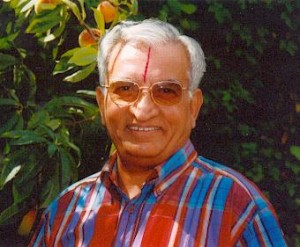
> Principle of Tridoshain Ayurveda <
MahÄ�bhūta is Sanskrit and PÄ�li for „great element.“In Hinduism, the five „great“ or „gross“ elements are ether, air, fire, water and earth. In Buddhism, the „four great elements“ (Pali: cattÄ�ro mahÄ�bhūtÄ�ni) are earth, water, fire and air. Read more: > HERE <
The Principle of Vata, Pitta and Kapha
The Physiology of Âyurveda is the physiology of the all-important trio, Vâta, Pitha and Kapha or Tridosha as they are generally called. Anybody, even faintly acquainted with Ayurveda, must have frequently come across the terms Vâyu, Pitha and Kapha. But very few have any clear idea of what is really meant by the terms. Every grown-up Indian has some vague idea about Vayu, Pitta and Kapha, and the terms are also used in common parlance. But in the majority of instances, the popular conception is quite different from the medical one. We have ample reference in Ayurvedic literature to the properties and different functions of Vatu, Pitta and Kapha, both in their normal and abnormal conditions. But we have no direct evidence by which we can come to a definite conclusion regarding the ultimate nature of these three substances. All that we can do is to make some inference based on reason, by a comparison of the original texts of Charaka, Sushruta and others and supplemented by such evidence as we can get from non-medical sources.
Yet Vâtha, Pitha and Kapha are the three entities on which stands the whole foundation of Ayurveda; we have to deal with them from the beginning to the end. Without their proper knowledge, successful treatment of diseases according to the Ayurvedic System is quite impossible. Before proceeding further, it is necessary that we should know something of the conception of the ancient Hindus regarding the physical world. Charaka and Sushrutha have mainly followed the Nyâya-Vaisheshikha and Sâmkhya-Yoga systems of Philosophy and occasionally the Vedanta view of the five Bhuta.
The nature and Physical Properties of the Tridosha.
The fundamental principle underlying the Ayurvedic System of Medicine is that of the Tridosha. In a nutshell, this Principle may be stated as follows:
There are three Dosha, Vâyu, Pitta and Kapha, which when in equilibrium keep the body sound, but which when vitiated, either singly or in combination, bring about diseases. The method of treatment would therefore be to bring the vitiated Dosha back to normal state, so that the three Dosha are again in equilibrium. We have seen that Âyurveda developed from the four Vedas; it is also regarded as a supplement of the Atharva Veda. But nowhere in the four Vedas can we find any specific mention of these substances.
It is in the Rig Veda only (1.3.6) that we find what may be regarded as the root idea of Vâyu, Pitta and Kapha :
“Tri-no asvinÄ� divyÄ�ni bhesajÄ� trih pÄ�rthivÄ�ni trirudattamadvyaha;
Om�nam samyor-manma k�yasunave tridh�tu sarma vahatam subhaspat�.
Here “tridhÄ�du sarma vahatam” has been explained thus by the commentator SÄ�yana: That is to say that when the three Dhâtu – Vâyu, Pitta and Kapha – remain normal and undisturbed, the body is at ease and there is no disease.
With the advancement of the knowledge, when the science of medicine was systematically studied, Âyurveda as a separate and special subject evolved out of the Vedas. The Principle of Vâyu Pttha and Kapha, was then fully developed and so we find copious reference to these terms in the Mahâ Bhârata and Upanishads.
Draya explained:
Dravya is defined as „that which contains in it action and quality and is a co-existent cause“. (C. S. I. 1.50 ; V. S. I. 1. 15). Substances exist and have qualities. We have two kinds of qualities, those which reside in a plurality of objects and those which are confined to individuals. The former are the general qualities (sâmânya), while the latter are distinguished as permanent (guna) and transitory (karma). Inherence is a special kind of relation. Relations are of two kinds. external like, conjunction (samyoga), or internal like inherence (samavâya). The first is regarded as a quality and the second is made a separate category.
The Vaisheshika believes that a substance is something over, and above the qualities. It is anxious to assert the existence of something which has qualities without being itself a quality, for we predicate qualities of substances and not qualities of qualities. Nor can it be said that we predicate one quality of a group of qualities. But since a substance cannot be conceived apart from qualities, it is defined as possessing qualities.
Qualities and action exist by combination with substance. Without substance, there were no qualities or action. Similarly, genus and species are correlative and are not absolute, except in the case of the highest genus which is Existence (bhâva) and the lowest species which is vishesha or individual characteristics appertaining to and inhering in the external substances. Genus and species, therefore, exist by combination with substances. Without substances, there were no genus and species. Similarly Samavâya or combination is “the intimate connection in the inseparably connected things“, e.g. parts and wholes of substances and their qualities, of action and the seat of action of genus and species and substances in which they reside, and of external substances and their ultimate differences. Without substance, then, there were no combination. Substance or dravya, therefore, is the fundamental reality.
Dravyas are nine in number, viz. the five Bhutas,
- 1. Prthivi (Earth)
- 2. Apah (Water)
- 3. Tejas (Fire)
- 4. Vâyu (Air)
- 5. Âkâsha (Ether
and
- 6. âtman (Soul)
- 7. Manas (Mind)
- 8. Dish or dik (Space) and
- 9. Kâla (Time).
These nine substances are intended to comprise all corporeal (murta) and incorporeal (a-murta) things. Ether, time and space are all-pervading, have the largest dimensions and are the common receptacles of all corporeal things. Soul and mind, Ether, time and space, Air and the ultimate atoms are not ordinarily perceptible, (V. S. VIII. 1.2).
[It must be clearly understood here that whenever we use the terms Earth, Water, Fire, Air and Ether, we use them only to denote the five bhutas and not in the sense of ordinary earth, water, air, fire or ether]
Charaka says that dravyas are of two varieties, – animate and inanimate. Those endowed with the senses are called animate; those devoid of senses are inanimate, (Sendriyam cetanam dravyam, nirindriyam acetanam, C. S. I. 1. 47.)
The Nature Of Citta According To The Yogasutras Of Patanjali
The five Mahâbhutas
The five Mahâbhuta originate from the five Tanmâtra. Of these, the Prthivi helps the other four by being their support. Ap helps the other four by moistening. Tejas helps the others by ripening. Marut helps by drying and Akâsha helps the other four by giving space. Prthivi is possessed of five qualities, – sound, touch, colour, taste and smell. Ap is possessed of four qualities,- sound, touch, colour and taste. Tejas is possessed of three qualities, sound; touch and colour. Vâyu is possessed of two qualities, – sound and touch. Akâsha has only one quality, sound.
We thus get :
Âkâsha/ Aether – (Sound-essence)
Vâyu/ Air – (Sound + touch)
Tejas/ Fire – (Sound + touch + colour)
Ap/ Water – (Sound + touch + colour + taste)
Prthivi/ Earth – (Sound + touch + colour + taste + smell).
Though Earth contains a number of qualities; we yet say that it has smell, on account of the predominance of this quality. If water and other substances besides earth possess smell, it is because particles of Earth are mixed up with them. We cannot think of Earth without smell, though we can so think of air and water. The special quality of Water is taste. Fire has for its special quality luminosity. Air is invisible, though limited in extent and made up of parts. The discrete nature of Air is inferred from the movements in the air, which would not be possible were Air an absolute continuum devoid of parts (V. S. II.1.14). Its existence is inferred from its special quality of touch and it is said to be a substance, since it possesses quality and action.
According to the Vaisheshika, the ultimate constituents of the concrete things of earth, air, fire and water are called paramânu or atoms.
Charaka has pointed out the primary qualities or special physical characters, of the five Bhuta in a different way. He says, „The characteristic of Earth is roughness, that of Water liquidity, of Air expansion, of Fire heat and that of Ether non-resistance. All these qualities are perceived through the sense of touch,“ -„Sparshendriya gocharam“, (C. S, IV. 1,27 ).
Bhutas are not elements
The Bhuta has been translated as ‚element‘. This is misleading. Bhutas are not elements and paramânus are not atoms or molecules in the modern sense of the terms. Modern writers laugh at the idea of calling the earth, water, fire, air and ether elements, ignoring the fact that a Bhuta is just an element, in the chemical sense of a substance that cannot be further analysed. „On referring to any Vaisheshika manual, it will be clear that what is ordinarily known as ‚earth‘, is not regarded by the Vaisheshika to be an ‚element‘ – in the technical sense; if it were so regarded, then alone could the Vaisheshika view be stigmatised as primitive and unscientific. The touch of ‚Earth‘ in its pure state is said to be ’neither hot nor cold’ so also the touch of ‚Air‘ and when asked why the ordinary earth and ordinary air are found to be very far from ’neither hot nor cold‘, the Vaisheshika explains that this is due to earth and air being mixed up with particles of Fire or Water, which make them hot or cold. From this, it is clear that what is regarded as ‚element‘ is not the earth etc., as we know and see them, but as they exist in their pristine and pure state, unmixed with any other substances“. Just as an atom of a chemical element has no free and independent existence, so also the five Bhutas in their pure state are never found in nature. What we find are compounds of the five Bhutas, mixed together in different proportions; that is to say, all gross matter is penta-bhautika.
Psychological explanation of the five Bhutas
The question may be asked, why were only five Bhutas postulated? Now, God has endowed us with only five senses, neither more nor less. The external world can only be apprehended by us through these five senses or Indriya. There is no other source which can give any information about matter which constitutes the physical world. For one particular lndriya, there is only one particular sense-object. The srotarerdriya or the sense of hearing can appreciate only the quality of sound. Sound, touch, colour, taste and smell are the five sense-objects corresponding to the five senses. These are gunas, and as such cannot exist independently by themselves, but must have some receptacle. In this way, we get five receptacles,- the five Bhutas.
What, for example, is the ‚atom‘ of Earth, but an ultimate material substratum of odour. On the other hand, let us take the case of the coloured gas Chlorine. It can be felt, smelt, tasted and seen. We are cognizant of its existence by at least four different sensory impressions; therefore it is not an element in the Vaisheshika sense of the term; it must be composed of at least four different Bhuta. The Hindu classification of matter into five Bhuta is, therefore, not at all absurd, as is supposed by many scientists who have an altogether different viewpoint.
According to Dr. Ganganath Jha, what the Vaisheshika means by saying that there are five Bhuta, is that there are five states of matter, viz., solid (Earth), liquid (Water), gaseous (Air), luminous (Fire) and etheric (Akâsha). It is better, however, to regard them as the Ashrayas or repositories of the five qualities,. viz. of smell, etc.
The confusion has been introduced by denoting the Bkutas by terms which are also used with reference to external objects of matter, such as earth, etc. But, as Hoffding says, „because language was developed under the influence of attention directed to the external world, we find that expressions for mental phenomena were originally taken from the material world. The inner „World behind is denoted by symbols borrowed from the „outer world of space“.
Contemplation of the elements (dhatu, mahabhuta) as a meditation method taught by the Buddha.
Hindu Medicine and the Vedas:
There is no doubt that the germ of Hindu medicine was laid in the Vedas. Because in all the four Vedas, – Rig, Yajur, Sâma and Athravana, – we find ample reference to medicine, drugs, methods of treatment and descriptions of the different parts and organs of the human body.
For example, reference is made to Dhanvantari in R.V IX. 112. In R.V. 1.117. 13 and V.74.5, we find that Chyavana was rejuvenated by the Ashvini Kumâras. ln 1. 23. 19, the medicinal properties of water are described. Reference is made to phthisis in R. V. X. 163 and to the organs of the body in R. V. III. 36.8, III. 50. 6, VI. 53. 8, VIII. 1. 26, X. 1. 84, X. 163 and X. 186. Similarly in the Sâma Veda II. 10. 70. 184 and in the White Yajur Veda XII.74. 75 and the 16 hymns that follow, we have reference to the medicinal properties of drugs.
But it is the Atharvana Veda which deals more fully with medicine. Here we have reference not only to mineral and vegetable drugs but also the causes of diseases (A. V. I. 23, 24, 36 ). „This work in its tenth book contains“, as Dr. Hroernle notes, „a hymn (the second) on the creation of man, in which the several parts of the skeleton are carefully and orderly enumerated in, striking agreement more specially with the system of Atreya as contained in Charaka’s Compendium“.
It is for this reason that the Ayurveda is generally included in the Atharvana Veda. This is also distinctly indicated by both Charaka and Sushruta. Sushruta (1. 1) calls it the Upânga of Atharvana Veda; and in Charaka Samhiaf (1. 30), we find that Atreya’s advice to his pupils was to have faith in the Atharvana Veda, because the latter deals with the treatment of diseases in the form of religious rites, sacrifices, oblations, expiation, fasts, the chanting of hymns, etc.
If we take the time of the Vedas to be 2000 B. C., we see that as early as this, the practice of medicine was in a very crude form. Nowhere in the four Vedas, can we find any mention of the term ‚Ayurveda‘. So we may take it that when later on the medical side of the Vedas was more fully and systematically developed, it formed a separate subject by itself and came to be known as Ayurveda.
- Dein Ayurveda Net:
- Samkhya Philosophie im Yoga
- Tattvas im Ayurveda und Yoga
- Die Veden, ein Überblick, Overview
- Arthavaveda
- Yoga in Buddhism
- Krishnamachar B.K.S. Iyengar, Bellur School, Patanjali Temple
- www.patanjaliyogafoundation.com
- yogena chittasya padena vacham malam sarirasya cha vaidyakena | yopakaroti tam pravaram muninam patanjalim pranajaliranato’smi || Let us bow the noblest of sages Patanjali, who gave Yoga for serenity of the mind, Sanskrit grammar for purity of speech and Ayurvedic medicine for the perfection of health.
- Meet all Ayurveda Groups, Friends, Studies at facebook <
- Meet Lord Dhanvantri at facebook <
TCM, TRAD. AYURVEDA AND PULSDIAGNOSES
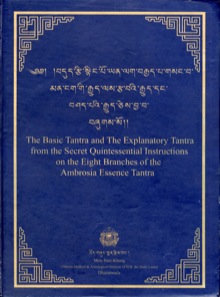
Introduction to Buddhist Ayurveda or Tibetan Medicine – Vata Dosha (Space and Air), Pitta Dosha (Fire and Water), Kapha Dosha (Water and Earth) — Lectures from the „Four Tibetan Medical Tantras“ („rGyud – bzhi“ in Tibetan, pronounced „Ju Shee“ — „Si-Bu-Yi-Dian in Mandarin — in Sanskrit it is called the „Amrta-hrdaya-astanga-guhyopadesa-tantra“ or Amrita Hridaya Astanga Guhyopadesha Tantra)
- >* VIDEO INTRO TO BUDDHIST AYURVEDA OR TIBETAN MEDICINE * <
- >* VIDEO Ayurveda Arthritis Chinese Medicine, Rheumatism …* <
Nalanda College of Buddhist Ayurveda of Nalanda University, part of the 501(c)3 Non-Profit Religious Organization Medicine Buddha Wholistic Ministry – Anonymous American Buddhist Monk of Geluk Nalanda Tradition of Tibet and India, Ayur-Vedic Herbal Medicine Practitioner (http://www.Ayurveda-Berkeley.com – 510-292-6696 in Berkeley, California)AYR220 Ayurvedic Consultation 001 Constitutional Medicine Tibetan Medicine Ayurveda Intake-Form (October 26, 2008)
Dr. Florian Ploberger, Wien , Lehrtätigkeit und Publikationen in den Themenbereichen TCM und Tibetische Medizin seit 2000 im Bacopa Bildungszentrum. Leiter des Wissenschaftlichen Beirates des Bacopa-Bildungszentrum in Oberösterreich sowie Präsident der Österreichischen Ausbildungsgesellschaft für Traditionelle Chinesische Medizin (ÖAGTCM).
BUCHTIPP: > Wurzel-Tantra & Tantra der Erklärungen des rGyud-bZhi , die vier Tantras der Medizin < (The Basic Tantra and The Explanatory Tantra from the Secret Quintessential Instructions on the Eight Branches of the Ambrosia Essence Tantra.) Dieser Text dient seit dem 12. Jahrhundert als Grundlagentext in der Ausbildung der tibetischen Mediziner und wird noch heutzutage auswendig gelernt.
2007 wurde er an den Men-Tsee-Khang (Schule für tibetische Medizin und Astrologie unter der Schirmherrschaft des XIV. Dalai Lama in Dharamsala, Nordindien) eingeladen, um dort Vorträge zu halten.
Zurzeit hält er wöchentlich an der Universität Wien eine Vorlesung über diverse Themen der Tibetischen Medizin und verbringt jedes Jahr mehrere Monate in Dharamsala.
Zu seiner grossen Freude und Ehre wurde er im Sommer 2009 offiziell von Dr. Dawa, dem Direktor des Men-Tsee-Khang, mit der Übersetzung der ersten beiden Teile des bedeutendsten Werkes der tibetischen Medizin: ( rGyud-bZhi*. Deutscher Titel: Vier Tantra der Medizin) beauftragt.
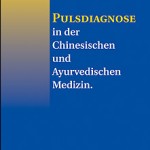
> Pulsdiagnose, die sanfte Botschaft des Körpers <
In diesem Buch werden tiefe Einblicke in die Kunst der Pulsdiagnostik gewährt. Die Autoren beschreiben die Pulsdiagnostik aus Sicht zweier verschiedener traditioneller, östlicher Medizinsysteme: der ayurvedischen und chinesischen Medizin.
Für eine korrekte Diagnostik ist die Pulstastung von entscheidender Bedeutung. In diesem praxisorientierten Buch werden alle wichtigen Aspekte des Pulses unter dem Blickwinkel der verschiedenen Krankheitsmuster dargestellt. Es vermittelt die Technik der Pulstastung sowie die klinische Bedeutung der klassischen Pulsqualitäten.
Die Vorteile für Sie:
- Pulsdiagnostik in 2 verschiedenen Medizinsystemen
- Starker Bezug zur Praxis
- Graphische Darstellung aller Pulsqualitäten
-
Dieses Buch dient sowohl Einsteigern als auch erfahrenen Therapeuten als wichtige Informationsquelle.
Die Autoren dieses interkulturellen Werkes sind:
- Frau Dr. Vinod Verma arbeitet und lehrt als Ayurvedischen Ärztin in Europa und Indien.
- Dr. Florian Ploberger ist Arzt für Allgemeinmedizin und Traditionelle Chinesische Medizin in Österreich.
ÖSTERR. AYURVEDA WOHLFÜHLPRAKTIKER
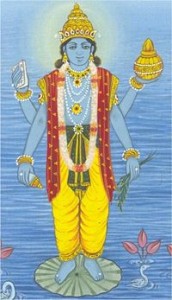
> EUROPÄISCHE AKADEMIE FÜR AYURVEDA <
> Ayurveda-Wohlfühl-Praktiker <
Wellness . Massage . Gesundheit . Beratung
Inhalte (gemäß Ausbildungsprofil des Bundesministeriums für Wirtschaft u. Familie BGBl. II) § 18 Abs. 1 der Gewerbeordnung 1994 . Berufsbegleitende Ausbildung über 3 Jahre. Entspricht der gesetzlichen Regelung gemäß Erlass des Bundesministerium für Arbeit u. Wirtschaft (MMWA-30.599/ 0243-l/7/2006) / Ayurveda-Wohlfühl-Praktiker
Aus- und Fortbildungen auch in Deutschland und in der Schweiz. Alle Termine auch online ! Fordern Sie unser Infomaterial an und abonnieren Sie den > Newsletter < mit Tipps & Spezialangeboten !
Ayurveda-Praktiker (Österreich) – Gesamtausbildung / AWPW2:
Das dreijährige Studium zum anerkannten Ayurveda-Praktiker bietet die fachliche und rechtliche Grundlage, um Ayurveda als hochwertiges Wellnessangebot in Österreich erfolgreich anzubieten.
Die fundierte Praxis-Ausbildung wird von langjährig erfahrenen und international bekannten Ayurveda-Ärzten und Therapeuten geleitet und vermittelt die Ayurveda-Massage, -Ernährung, -Psychologie und -Schönheitspflege nach ausgezeichneten Unterrichtskonzepten und mit umfangreichem Begleitmaterial. Neben vielen praktischen Techniken und Behandlungsverfahren werden auch neue Wege aufgezeigt, um Ayurveda mit einem innovativen Marketing erfolgreich in der eigenen gewerblichen Praxis oder im gehobenen Spa-Segment umzusetzen.
> Meet Pentavox Herbals, Ayurveda (Biggest Ayurveda Group on fb) <
> Meet FREE Visa to India for MBA, Degree Programms & it jobs at fb<
> Meet all Ayurveda Groups and Friends at facebook <
> Meet Dhanvanthari Groups and Friends at facebook <
> Meet NaturalNews.com at facebook <
NaturalNews.com is an independent news resource that covers the natural health and wellness topics that empower individuals to make positive changes in their personal health. NaturalNews offers uncensored news that allows for healthier choice.
AYURVEDA, TRIPHALA, BITTERSTOFFE
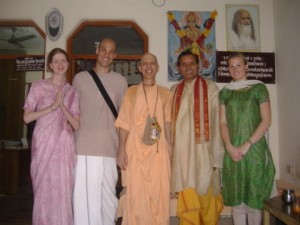
(Iskcon Devotees at Pulsediagnosis)
> HILDEGARD MAITRUNK FRÜHLINGSKUR <
> AYURVEDISCHE REINIGUNGSMASSNAHMEN <
Triphala is an Ayurvedic herbal RASAYANA formula consisting of equal parts of three myrobalans, taken without seed: Amalaki (Emblica officinalis), Bibhitaki (Terminalia bellirica), and Haritaki (Terminalia chebula), with potential anti-cancer properties. The word triphala (better triphalÄ�, from Hindi/Sanskrit: त्रिफला, pronounced [trɪˈpʰɐlɑ], widely mispronounced [triˈfɑːlə] or [triˈfæːlə] among English speakers) means literally “three fruits”. Read More: > HERE <
-
madhura–süß
-
amla– sauer
-
lavana–salzig
-
katu–scharf
-
tikta–bitter
-
kashai–herb
Für eine optimale Gesundheit und eine optimale Ernährung sollten die sechs Geschmacksrichtungen in einem ausgewogenen Verhältnis in der Nahrung vorhanden sein.
Dieses ayurvedische Prinzip der sechs Geschmacksrichtungen nimmt auch eine Schlüsselstellung in der Wissenschaft der Zubereitung ayurvedischer Kräuterpräparate ein. Menschen, die Pitta und Kapha ausgleichen müssen, sollten allgemein mehr bittere und herbe Nahrungsmittel zu sich nehmen.
Die ayurvedischen Churnas bzw. Gewürzmischungen sind eine praktische und bequeme Art, diese Geschmacksrichtungen in die Ernährung zu integrieren. Die westliche Ernährungsweise neigt hauptsächlich zu süßen und saueren Geschmacksrichtungen. Zu den süßen Nahrungsmitteln rechnet man Weizenprodukte wie z.B. Brot, Zerealien (Haferflocken, Müsli) und Nudeln, außerdem Reis, Milch, Eis und andere Süßspeisen.
Zu den saueren Nahrungsmitteln gehören Nahrungsmittel, die aus Tomaten hergestellt wurden wie Ketchup und Nudelsaucen, außerdem Käse, Zitrusfrüche und sauere Fruchtsaftgetränke. Zu viel von diesen saueren Nahrungsmitteln erzeugen zu viel Hitze im Körper und Menschen mit Übersäuerung oder anderen Anzeichen eines Pitta-Ungleichgewichts sollten diese reduzieren oder möglichst vermeiden. Bitteres trägt dazu bei, Pitta und Kapha auszugleichen. Es reduziert die Wasserspeicherung und wird als Stärkungsmittel für eine blockierte Leber verwendet. Es reinigt und trägt dazu bei, Brennen und Jucken zu verringern. Im Übermaß angewendet, kann es Vata erhöhen und den Körper austrocknen. Herbe Nahrungsmittel reinigen das Blut und tragen ebenfalls zum Ausgleich von Pitta und Kapha bei, im Übermaß erzeugen sie Gase und Verstopfung.
Beispiele für Nahrungsmittel und Gewürze mit bitterem und herbem Geschmack:
-
Bitter: Bittermelone und Kürbis· Japanische Aubergine· Kurkuma (Gelbwurz)· Bockshornkleesamen· grünes Blattgemüse· Gerste· Basilikum· Brennessel· Kopfsalat· Aloe Vera
-
Herb: Apfel· Granatapfel (schmeckt sauer auf der Zunge, ist aber sowohl herb als auch bitter)· Birne· Quinoa· Hülsenfrüchte· Tofu· Sprossen· Bohnen
Versuchen Sie, einige dieser Nahrungsmittel in Ihren täglichen Speiseplan aufzunehmen. Eine einfache Art, den bitteren Geschmack zu integrieren, ist es, dem Essen beim Kochen Bockshornkleesamen zuzufügen. Ein Teelöffel Bockshornkleesamen pro Tag ist eine sehr gute Art, mehr von dem ausgleichenden bitteren Geschmack im Essen zu haben. Sie können sie in Ghee anbraten und dann Ihr Gemüse zufügen oder Sie geben sie einfach während des Kochens zu.
Kurkuma (Gelbwurz) ist sowohl bitter als auch herb. Es wird als blutreinigend und antioxidant angesehen. Ein Teelöffel davon pro Tag, den Sie in Ihrem Essen mitkochen, ist eine ausgezeichnete und billige Gesundheitsvorsorge und ist eine wunderbare Art, Ihre Aufnahme an Antioxidantien zu erhöhen.Granatapfelkerne schmecken sauer, sind aber sowohl herb als auch bitter und sind nicht pitta-erhöhend.
In den ayurvedischen Schriften werden Granatapfelkerne als pittaausgleichende Früchte und als wunderbares Herzstärkungsmittel bezeichnet. Aus Granatapfelkernen kann man leckere Tunke und Chutneys machen, die man täglich essen kann, besonders im Sommer, wenn das Pitta Dosha leicht aus dem Gleichgewicht gerät.
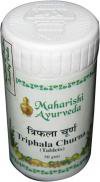
-
Triphala corrects constipation, cleanses and tonify the gastro intestinal tract.
-
Detoxifies the whole body and improves digestion and assimilation
-
Triphala reduces high blood pressure and hypertension and improves blood circulation.
-
Very effective in Irritable bowel syndrome and ulcerative colitis.
- Highly anti inflammatory, anti viral and also stimulates bile flow and peristalsis.
- Triphala is also helpful in liver disorders, acts as an expectorants and corrects diverticulitis. ( Diverticulosis )
-
Dose – 2-2 tablets after lunch and dinner ( before sleeping ) with luke warm water.
Many companies now a day making triphala but its my own believes Maharishi Triphala tablets are best. And have excellent result compare to other Companies and they are not expensive just 10$ cost for 100 tablets.
For any information, question , doubt, quarries, can mail me any time or put question on wall .. also for your suggestion can put in wall.. all information that is transformation of knowledge..
> AYURVEDA4UALL… AT FACEBOOK. <
> RASAYANA in der Ayurvedatherapie <
vaidyajitripathi@gmail.com
can send me text.
+91-9958504088
> Dein Ayurveda Net: ….. > Ayurveda, Ursprung, Geschichte <
> Meet Herbals and Naturals and friends at facebook <
> Meet all Ayurveda Groups, Friends, Studies at facebook <
> Meet Lord Dhanvantri at facebook <
> HAPPY BIRTHDAY SWAMI JI…..
AYURVEDA FOOD DIET, DOSHA´s, YOGA
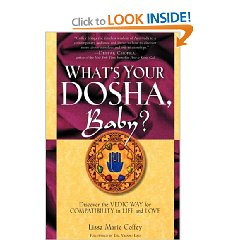
> AYURVEDA4YOU ALL, SAMA DOSHA <
> Natural Institute of Ayurveda <
> AYURVEDIC LIFESTYLE & DAILY ROUTINES <
Ayurveda (DevanÄ�garÄ�: आयुर्वेद, the ’science of life‘) is a system of traditional medicine native to the Indian Subcontinent and practiced in other parts of the world as a form of alternative medicine. In Sanskrit, the word Ayurveda consists of the words Ä�yus, meaning ‚life‘, and veda, meaning ‚related to knowledge‘ or ’science‘. Evolving throughout its history, Ayurveda remains an influential system of medicine in South Asia. The earliest literature of Ayurveda appeared during the Vedic period in India.The Sushruta Samhita and the Charaka Samhita were influential works on traditional medicine during this era. Ayurvedic practitioners also identified a number of medicinal preparations and surgical procedures for curing various ailments and diseases.Ayurveda is considered to be a form of complementary and alternative medicine (CAM) within the western world, where several of its methods, such as the use of herbs, massage, and Yoga as exercise or alternative medicine, are applied on their own as a form of CAM treatment
Ayurveda is grounded in a metaphysics of the ‚five great Elements‘ (DevanÄ�garÄ�: [महा] पञ्चभूत; earth, water, fire, air and ether)—all of which compose the Universe, including the human body.Chyle (called Rasa dhatu), blood (called Rakta dhatu), flesh (called Mamsa dhatu), fat (called Medha dhatu), bone (called Asthi dhatu), marrow (called Majja dhatu), and semen or female reproductive tissue (called Shukra dhatu) are held to be the seven primary constituent elements (DevanÄ�garÄ�: सप्तधातु) of the body.Ayurveda stresses a balance of three Humors or Energies: vata (wind/air), pitta (bile) and kapha (phlegm). According to Ayurveda, these three regulatory principles— Doshas (DevanÄ�garÄ�: त्रिदोष)—are important for health, because when they are in balanced state, the body is healthy, and when imbalanced, the body has diseases. Ayurveda hold that humans possess a unique combination of Doshas. Read more: > HERE <
Yoga per se, does not say much about diet, except that we should be ‚Mitahari‘ (Mita-Ahar-ee), ‚Mita‘ meaning ‚proportionate‘ or ‚enough to nourish‘, and ‚Ahar‘ meaning ‚food‘. ‚Mitahar therefore, has come to mean ‚moderation in eating‘. But, we know, it is not enough to be moderate in intake of pebulum. It is not enough to mind the quantity of food; quality of food ingested is of even greater importance. In Yoga shastras, Mitahar has been described as diet that is
- Palatable,
- Nutritious,
- Providing various ‚Dhatu‘ (literally meaning ‚Minerals‘),
- Containing dairy produce such as milk, yogurt, butter or butter-milk,
- Eaten in moderation, and
- Eaten in a spirit of dedication to the Divine.
The last aspect is akin to the saying of grace at the dinner table by devout Christians.
Hindu shastras also speak about the three ‚Guna‚ of food, ‚Guns‚ meaning quality. ‚Sattwic‚ food is variously understood as ‚contributing to serenity‘, ‚providing the essentials‘, Keeping the human organism sweet and clean‘, etc. ‚Rajasic‚ food contributes to dynamism and other requisite qualities needed by a householder or housewife. ‚Tamasic‚ food is strong in taste or smell and can be ‚heaty‘ or ‚exciting passions‘.
Revelations of Science & Yoga, Diabetes
In the light of modern nutritional researches, we have to find out the ideal diet which is both ‚Mita and Sattwic, so that the Yoga practitioner benefits therefrom both physically and mentally. Let us find out whether Yoga should favour the intake of flesh, fish or fowl. What does human anatomy and physiology tell us? Read More: > HERE <
- YOGAH AND SHODANA: > HERE <
-
ABOUT DIET IN AYURVEDA :
JAISIYARAM: YOGA, AYURVEDA, SOZIALES
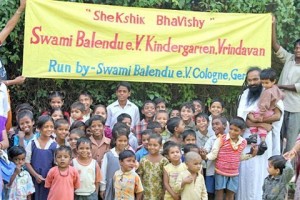
WILLKOMMEN AUF JAISIYARAM.COM!
Man kann in Workshops zu den Chakras, über Yoga oder Ayurveda teilnehmen oder auch zu einer individuellen Heilsitzung, einer Meditation oder einer Chakra Tanz Party kommen.
Auf dieser Internetseite findet ihr Information zu all diesen Aktivitäten sowie verschiedene Möglichkeiten, wie ihr von dieser wundervollen Energie profitieren könnt.
Alle Aktivitäten und Spenden unterstützen Swami Balendus Wohltätigkeitsprojekte für arme Kinder in Indien.
Wir wünschen euch viel Spaß beim Entdecken der Seite!
> Meet Swami Balendu, friends, socialprojects studies at facebook <
AYURVEDA CONCEPT OF RASAYAN THERAPY
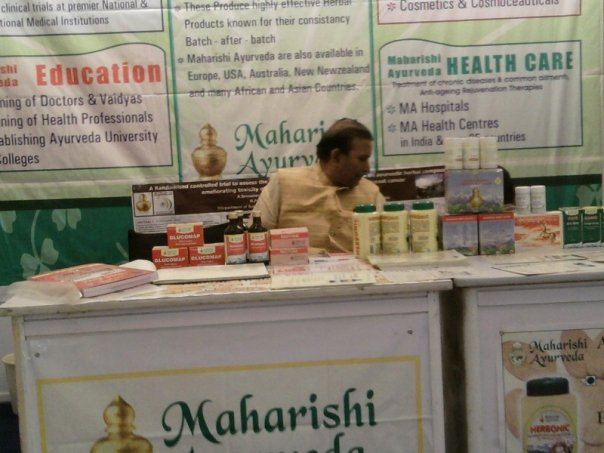
( ayurveda4uall’s Photos – ALL India confrence Delhi 7-8 Oct )
Rasayan, a Sanskrit word (with literal meaning: Path (ayana) of the Juice (rasa), or Elixir vitae), is used to describe chemistry and alchemy, and chemistry is generally called Rasayan Shastra in Sanskrit,Nepali, Marathi, Hindi, Kannada and several other languages. Ancient rasayan texts center around the use of prepared forms of mercury (see samskaras), as do occidental alchemical texts. However, there is also ample mention of the preparation of medical tinctures in the ancient science of rasayan; rasayan is in fact a part of Ayurveda. Read more: > HERE <
Concept of Rasayana Therapy
Rasayana Tantra is one of the eight major divisions of Astang Ayurveda. In Ayurveda, one of the major methods of presentation of positive health has been described i.e. Rasayana.
Sushruta has defined a healthy man as one who has:-
• Equilibrium of the Doshas Sama dosha.
• Normal functioning of Agni Sama Agni
• Normal condition of 7 Dhatus Sam Dhatu
• Normal Excretion of waste products Sam Malkriya.
Beside this Atma (Soul), the Indriyas or sense organs and Mana or mind should be happy and cheerful Prasanatamendriya Mana (Su.Su.15/15). The current modern definition of health is also same “Health is a state of complete physical, mental and social well being and not merely absence of disease. (W.H.O.)
Healthy state of mind and body can be achieved by Rasayana Therapy or Rejuvenation Therapy
Rasayana Stands as an answer to solve the problem of healthful longevity including mental development and resistance against disease. That is why; Rasayanatherapy has been included as one of the eight major divisions of Ashtang Ayurveda. Rasayana Chikitsa or rejuvenation therapy helps to promote and preserve health and longevity in the healthy, and to Cure disease in sick. We all want to look forever young and increase our life span by staying healthy, Rasayans or vitalizers, as they are called, do exactly the same. They replenish the vital fluids of our body, thus keeping us away from diseases. Rasayana refers to the nutrition and its transportation in the body. Such a state of improved nutrition is claimed to lead to a series of secondary attributes like longevity, immunity against diseases, mental competence and delaying of aging.
Rasayana is actually that which increases the essence of each Dhatu, starting from Rasa. Taking Rasayana is helpful to increase the immunity of person to keep him away from diseases. The person become healthy and strong .Literally the term Rasayana refers to the means of obtaining the optimum nourishment to the Dhatu.
Meaning of Rasayana
The word Rasayana is composed of two words Ras + Ayan. The means by which one gets the excellence of Rasa (The nourishing fluid which is produced immediately after digestion) is known as Rasayana. Apart from the excellence of Rasa, the individual is endowed with Psychic excellence like sharp memory, by virtue of rejuvenation therapy. The term Rasayana connotes a specific meaning. Drugs, diet and regimens which promote longevity by delaying aging and preventing diseases are called Rasayana. The term Rasa has different connotation. In the present context, it means the body fluid which is responsible for nourishment of entire physique. Impairment of circulation of this body fluid results in diseases and decay. This body fluid of good quality should not only be present in adequate quantity, but also it should be able to permeate (circulate) throughout the various cells of the body to provide the type of nourishment they need.
Rasayana is a specialized type of treatment influencing the fundamental aspect of body viz. Dhatus, Agni and Srotansi and ojus etc. Rasayana Chikitsa boosts theojus and immune system. The adjective Ojaswiis used to describe those people who keep good health in all seasons and all stages of life. It is like obtaining a high rank in a physical or mental fitness. Ojus gives a bright look, sharp memory, high performance and every expected pleasure.
Historic Consideration of Rasayana
Rasayana therapy is as old as the Vedas because many references on Rasayana therapy are available in the Atharva Veda (atharvaveda 8/7/4). Extensive descriptions of divine Rasayana agents like Soma are available in classics. References about Achara Rasayna and Sadvrita are also available in the vedic texts similar to Charakadescription (Rig-Veda 5/1/7 and Atharvaveda 16/2/2)
Besides extensive references is available regarding the superiority of certain other common Rasayana drugs like Pippali, Jivanti and Punarnava etc. Similarly a concept of Ajasrika Rasayana also appears in vedic literature.
Vedas have seriously considered the problems of aging and its delaying. It has been the cherished wish of human race to achieve long life and to live at least 100 years in perfect health. “Jivema Sharadah Shatam” (Rigveda 10/39/8).
Probably all these ideas at a later stage necessitated the development of a full-fledged clinical discipline like Rasayana therapy to deal with the problem of aging, its delaying.
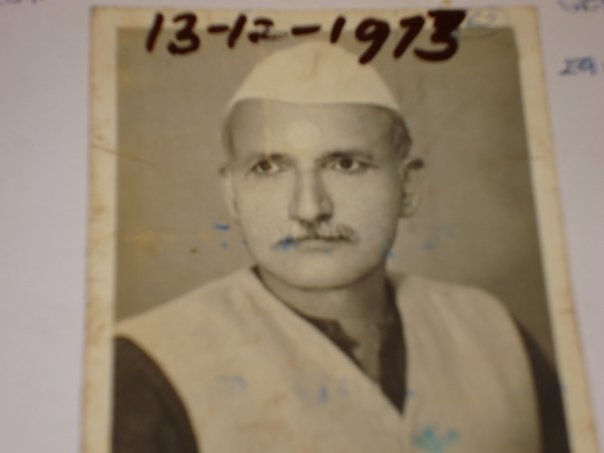
…my beloved grandfather who was also great vaidya . ( Ayurvedic doctor ) had open ayurveda college in 1970´s then then he moved to noida near to delhi on speical invitation of his holiness maharishi ji and worked 20yrs in maharishi Ayurveda.
vaidya adwait tripathi
Arogya sadnam
H-129, Sector-41
Noida-201302
On call special appointment can fix for patient for Free Pulse diagnose ..
> MEET AYURVEDA4UALL… AT FACEBOOK. <
> Dein Ayurveda Net: ….. > Ayurveda, Ursprung, Geschichte <
> Dein Ayurveda Net: ….. > Jahreszeiten im Rythmus, Bioenergien <
> Meet Herbals and Naturals and friends at facebook <
> Meet all Ayurveda Groups, Friends, Studies at facebook <
> Meet Lord Dhanvantri at facebook <
GLORY´s and THANK´s. READ FULL ARTICLE:
SAVE GANGA, AYURVEDA, YOGA
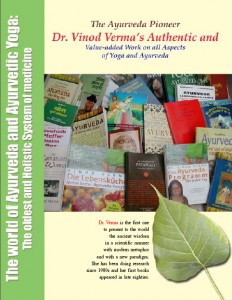
The oldest & holistic System of medicine !
AYURVEDA CENTER, AYUR ANANDA ASHRAM
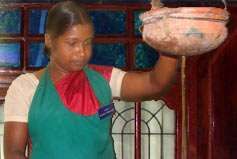
Karmarthakamamoksanamarogyam Mulamuttamam“ Charaka Samhita, Sutrasthana 1,15 – The freedom from diseases is the best source of wealth, gratification and emancipation
AGPAA was founded in March 2008 from the collaboration between the School of Ayurveda Therapists Ananda Ashram in Milan and Guruprakash Ayurvedic Center in Kovalam, which boasts a century-old family tradition of offering Ayurveda and Ayurvedic treatments in the traditional form through his staff of doctors and therapists.
green leaf, Department of Tourism – Government of Kerala (India):
The goal is to make available this millenary discipline for those who want to learn the philosophy and practice of Ayurveda treatment through a well-organized structure in the place of origin of Ayurveda. Also, give the chance for a modest cost to all those who want to benefit from therapeutic treatments and the application of Ayurvedic principles in their lives. Life is a possibility given to human beings to live the highest state of consciousness in a state of health and stable happiness, but usually we have very little knowledge of life and consequently its enormous potential is not used.
Ayurveda, the „Science or Knowledge of Life“, was born to make men aware of his extraordinary potential revealing the fundamental principles of life that sometimes seem of disarming simplicity and sometimes very complex.
Unfortunately Ayurveda is known only as a system of natural medicine, a technique of massage, a beauty treatment or a way to lose weight. True, Ayurveda is all this, but not limited to this, Ayurveda is a lot, much, more.
The essence of Ayurveda can be expressed through these Sanskrit verses, in the original language:
- Hita Ahitam Sukham Dukham Ayustasya Hitahitam
- Maanamcha TATC yatroktam Ayurveda sa Ucchyate
- „Ayurveda is the science that deals with good and bad, happy and unhappy in life, what promotes or hinders the life, also with the quality and length of life.
- Samadosha samagnishcha Samadhatu Mala Kriyah
- Prasannatmendriya manah Swasthya ityabidhiyate
- „Health is a balance of bodily humors, metabolic processes, activity of body tissues and excreta, the purity of body, mind and spirit.
Ayurveda, as the science of life, belongs not only to Indian culture but to all humanity, India has only the merit of having kept in its integrity this valuable knowledge. Kerala is one of the states where the Indian Ayurveda has been preserved from time immemorial.
> Meet Ayurveda Friends, Groups, Studies at facebook <
> Meet REIKI Friends, Groups, Studies at facebook <
> Meet Bharatanatyam Friends, Groups, Studies at facebook <
> Meet Tradtional Tibetan Medicine Book and Friends at facebook <
> Meet Traditional Chinese Medicine, Friends, Groups, Studies at fb<
PRIME TREATMENTS IN AYURVEDA
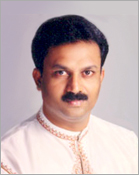
Dr. E. Shaji Raj, www.punarjanis.com
> PRIME TREATMENTS IN AYURVEDA <
Centuries ago, the enlightened masters, in search of spiritual solace, composed the Ayurveda, for the welfare of humanity. According to the scriptures, the human body is made up of 72000 channels connected to the seven spiral energy centers, the diseases of body and mind, which in turn block the path to spiritual enlightenment. The Panchakarma treatment aims at cleansing these channels, pacifying the disease and nourishing the body. It provides longevity, immunity against the disease, whereas in ancient times Yoga, Astrology, Tantra, and Ayurveda were practiced not for longevity but as an ultimate path to enlightenment.
In those ages Ayurveda and self-realisation were cognate and the people held this science in veneration. In the present world it is seen as merely a tool to cure human ailments. More over the practitioners of Ayurveda were Yogis, who would hold the stretched arms of the patients in their hands locate the pulse points and close their eyes as if in a deep trance. Seconds later, they would recount the diagnostic findings one by one. They never had any clinical laboratory or any other technological devices. The innate propensity of certain punarjanis were so splendid that it could work wonders to cure the diseases.
The physician:
Inspired by the findings of the Ayurveda masters we have formulated a system of treatment at ‚Punarjanis‘ bringing the ancient teachings to the limelight in an attempt to serve humanity. We focus on patients with chronic intractable ailments where routine medicine is only palliative.
Dr. E. Shaji Raj, a disciple of Bhramashri Parabattaraka Ananganandanathan Padathirtha, completed his > BAMS < from Madras University. Hailing from a family of traditional Ayurvedic physicians, he has been doing active research in the field of healing for the past 16 years – primarily related to raising energy from the lower center of the body to the higher center. He is one among the few ayurvedic physicians around the world who practice pulse reading and panchakarma treatment.
Incorporating the philosophy and the gist of Ayurveda with the root idea of Tantra and Yoga, the final result is not just cure, but a sea change – a path to enlightenment and bliss. The results have been amazing – an enlightened mind in a sound body.
Adi Shankara:
Adi Shankara (Malayalam:ആദി ശങ്കരന്, DevanÄ�garÄ�: आदि शङ्कर, Ä�di Śaṅkara, pronounced [aːd̪i ɕaŋkərə]); (788 CE – 820 CE), also known as Śaṅkara BhagavatpÄ�dÄ�cÄ�rya and Ä�di ŚaṅkarÄ�cÄ�rya, was an Indian philosopher who consolidated the doctrine of Advaita Vedanta, a sub-school of Vedanta. His teachings are based on the unity of the soul and Brahman, in which Brahman is viewed as without attributes. He hailed from Kalady of present day Kerala.
Shankara travelled across India and other parts of South Asia to propagate his philosophy through discourses and debates with other thinkers. He founded four mathas („monasteries“), which helped in the historical development, revival and spread of Advaita Vedanta. Adi Shankara is believed to be the organizer of the Dashanami monastic order and the founder of the Shanmata tradition of worship.
His works in Sanskrit, all of which are extant today, concern themselves with establishing the doctrine of Advaita (Nondualism). He also established the importance of monastic life as sanctioned in the Upanishads and Brahma Sutra, in a time when the Mimamsa school established strict ritualism and ridiculed monasticism. Shankara relied entirely on the Upanishads for reference concerning Brahman and wrote copious commentaries on the Vedic Canon (Brahma Sutra, Principal Upanishads and Bhagavadgita) in support of his thesis. The main opponent in his work is the Mimamsa school of thought, though he also offers some arguments against the views of some other schools like Samkhya and certain schools of Buddhism that he was familiar with.
Read More here : > HERE <
> Meet all Ayurveda Friends, Groups, Studies at facebook <
> Meet all Buddhism Friends, Groups, Studies at facebook <
> Meet all Hinduism Friends, Groups, Studies at facebook <
> Meet FREE visa to india for MBA , degree Programs, it jobs at fb <
> Meet Vedanta Studies, Friends, Yoga, Int. Society, Groups at fb <
THE MOST TRUSTED NAME IN AYURVEDA
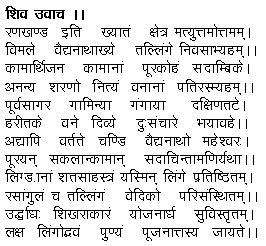
Baidyanath Mahatmya (mentioned in several Puranas)
Fusion of ancient knowledge
with modern scientific revelation.
> Ram Dayal Joshi Memorial Ayurvedic Research Institute <
Baidyanath is one of the oldest and most popular pharmaceutical firm specialising in Ayurvedic medicines.It has been manufacturing many highly popular items like Chyawanprash and Dashmularishta for several years. Shree Baidyanath Ayurved Bhawan (p) Limited was founded in 1917 by Late Pt. Ram Dayal Joshi. Its registered office is in Kolkata. To encourage and boost research in Ayurveda, Baidyanath established Pt. Ram Dayal Joshi Memorial Ayurvedic Research Institute at Patna in 1971. Baidyanath Group awards two hundred thousand rupees every year for the best research paper or book on Ayurveda. Read More: > here<
Ayurveda is a 5000 year old Science of health care and herbal treatment. Ayurveda, is highly effective in common and complicated ailments, assures long term relief and has no side effects. Ayurveda is now backed by modern scientific research and technologies and provides its gentle healing touch to millions around the world.
One of India’s most respected Companies, Shree Baidyanath Ayurved Bhawan (p) Ltd. (Kolkata), popularly known as Baidyanath, is the acknowledged leader of Ayurvedic know-how. Established in 1917, the Company has played a pioneering role in re-establishing ancient knowledge with modern research and manufacturing techniques.
Shree Baidyanath Ayurved Bhawan (p) Ltd. was founded in 1917 by Late Pt. Ram Dayal Joshi. Its registered office is in Kolkatta. To encourage and boost research in Ayurveda, Baidyanath established Pt. Ram Dayal Joshi Memorial Ayurvedic Research Institute at Patna in 1971. Baidyanath awards two lakh of rupees every year for the best research paper or book on Ayurveda.
> Meet Ayurveda, Groups, Studies, Friends, Fans at facebook <